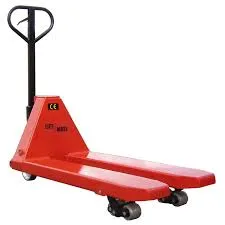


Understanding Chain Blocks and Lever Blocks in Material Handling
In the realm of material handling, the importance of efficient lifting mechanisms cannot be overstated. Among the various tools employed, chain blocks and lever blocks stand out due to their functionality, versatility, and ease of use. Both of these devices have specific applications and advantages, making them essential in industries ranging from construction to manufacturing.
Chain Blocks
Chain blocks, often referred to as chain hoists, employ a chain mechanism to lift heavy objects. They consist of a lifting chain, a block, and a hook, meaning they can easily be attached to various load types. The operation of a chain block is straightforward as the user pulls on the chain, the lifting mechanism engages, allowing for significant loads to be raised with minimal effort.
Chain blocks are particularly effective in scenarios where heavy loads need to be lifted vertically over a short distance. They are often used in warehouses for loading and unloading goods, in construction sites for hoisting materials, and in workshops for moving heavy machinery. Their capacity often ranges from 0.5 tonnes to several tonnes, which makes them adaptable for different work environments.
One notable advantage of chain blocks is their durability. Constructed with robust materials, they can withstand the rigors of heavy-duty applications. Furthermore, chain blocks can operate in various environmental conditions, making them suitable for both indoor and outdoor use. However, users must be trained in their safe operation to prevent accidents caused by misuse or overloading.
Lever Blocks

On the other hand, lever blocks, also known as lever hoists, work on a different principle. They utilize a ratchet and pawl mechanism, allowing users to lift objects by pulling a lever. This design enables the lifting of loads without the need for electrical power, which is advantageous in remote locations or areas where power sources are unavailable.
Lever blocks are characteristically lighter and more portable than chain blocks, making them ideal for smaller jobs or places where space is limited. They are particularly effective for pulling, lifting, or lowering heavy objects and can manage loads typically ranging from 0.5 tonnes to 9 tonnes or more. Due to their compact size, lever blocks are often used in automotive repair shops, warehouses, and construction sites for positioning loads accurately.
Moreover, lever blocks allow for smooth operation with controlled lifting speeds, making them suitable for delicate handling tasks. Their user-friendly design enables quick setups, allowing workers to focus on efficiency and productivity.
Conclusion
In conclusion, both chain blocks and lever blocks are critical tools in material handling practices. The choice between the two largely depends on the specific needs of the task at hand. For heavier, vertical lifting tasks, chain blocks are preferred for their strength and durability. In contrast, lever blocks are ideal for portability and versatility in a variety of settings.
Understanding the applications and limitations of each type of block is essential for ensuring safety and efficiency in lifting operations. By employing the right tool for the job, businesses can enhance productivity while minimizing the risk of accidents in the workplace.



